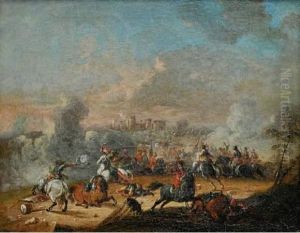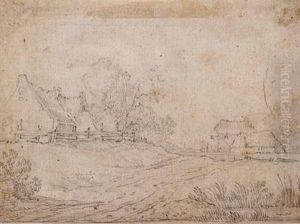Carl Breydel Paintings
Carl Breydel, also known as Karel Breydel or Charles Breydel, was a Flemish painter who specialized in battle scenes, landscapes, and genre paintings. Born on August 19, 1677, in Antwerp, he was part of a family with strong artistic roots; his brother, Frans Breydel, was also a painter. Carl was likely initially trained by his father, but the identity of his primary master in painting remains unclear. Despite this, he developed a distinctive style that gained him recognition in his lifetime.
Breydel traveled extensively throughout Europe, which influenced his artistic development. His sojourns included a stay in Paris, where he was influenced by the French Rococo style, and a significant period in Austria. His experiences abroad, particularly his exposure to various European styles and his witnessing of military campaigns, informed his choice of subjects and his approach to composition and color.
Carl Breydel was best known for his dynamic battle scenes, which were sought after by an audience with a growing interest in martial glory during his time. These works often featured dramatic perspectives, vigorous action, and a keen attention to detail in the portrayal of horses and soldiers. In addition to his military scenes, Breydel painted serene landscapes and genre scenes that depicted everyday life with a similar level of detail and vibrancy.
Despite his Flemish origins, Breydel's work was very much in demand across Europe, and his paintings were collected by aristocrats and royalty, including the Habsburg rulers of Austria. His international success is a testament to the universal appeal of his themes and his mastery of the painter's craft.
Carl Breydel died on June 23, 1744, in Antwerp. Today, his works can be found in various museums and private collections, where they continue to be appreciated for their lively depiction of 18th-century life and conflict.

